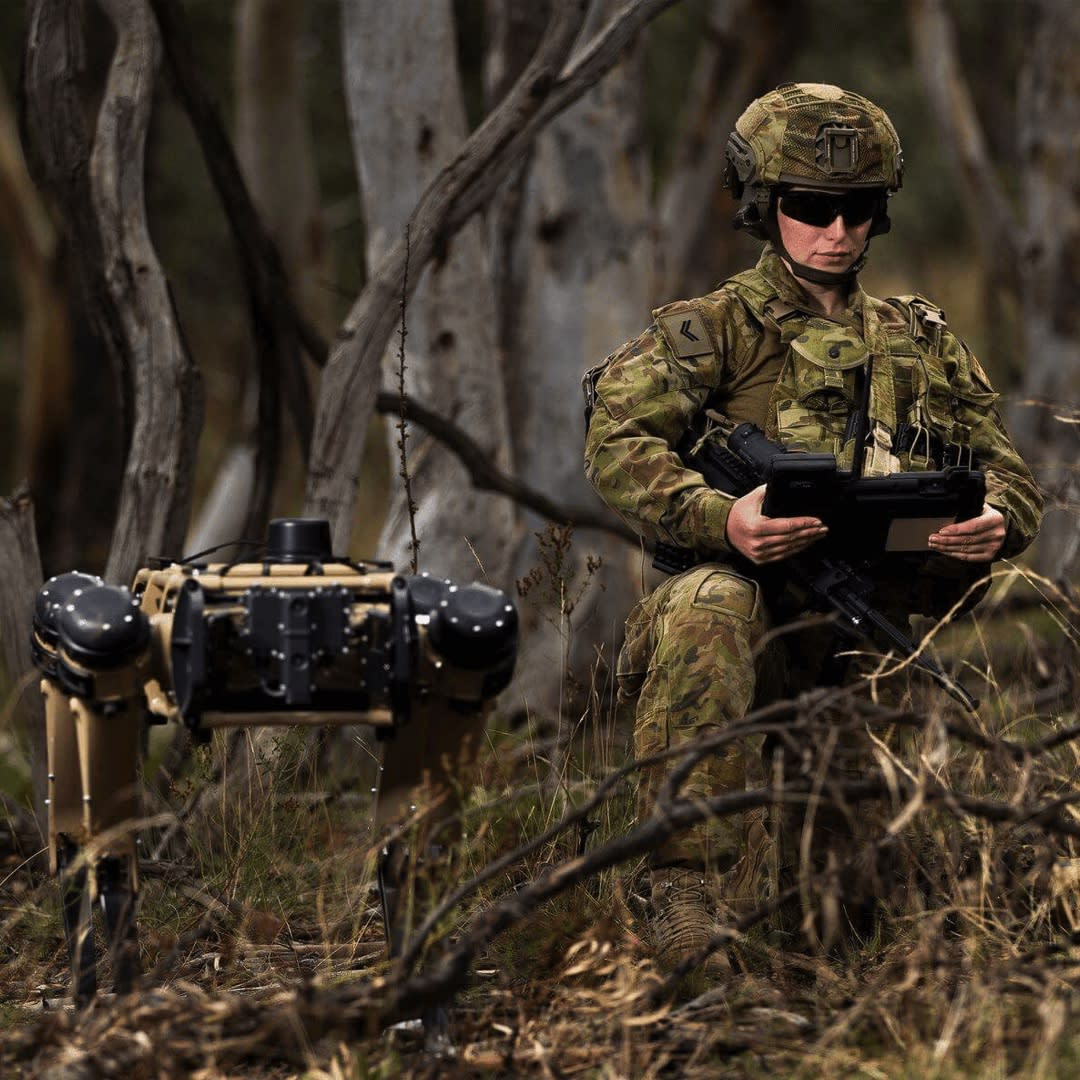
The US Department of Homeland Security’s Science and Technology Directorate this week highlighted ongoing research into the employment of quadruped dog robots on the country’s southern border. The department is using these Spot-like robots to patrol areas where human agents would otherwise be unable to operate.
“The southern border can be an inhospitable place for man and beast, and that is exactly why a machine may excel there,” the DHS’s Brenda Long said in a statement tied to the news. “This S&T-led initiative focuses on Automated Ground Surveillance Vehicles, or what we call ‘AGSVs.’ Essentially, the AGSV program is all about…robot dogs.”
Ghost Robots, a Philadelphia-based startup that has previously worked with huge corporations like Verizon, is teaming with the program. At a recent trade exhibition, one of the company’s robots was using a remote-controlled sniper weapon- (SWORD Defense Systems Special Purpose Unmanned Rifle or SPUR). Despite previous discussions with DARPA, Boston Dynamics, the most well-known quadrupedal robots company, has refused to cross this threshold.
Purpose

The claimed purpose of these border robots is border patrol. The systems can roam freely or be in control remotely, with operators receiving live video feeds. Of course, there’s no evidence that these robots will have weapons systems. However, this is what initially drew attention to the firm.
Ghost, for its part, claims it is glad to work with the US government. Also, it is mostly agnostic when it comes to matters like payload.
“We don’t make the payloads. Are we going to promote and advertise any of these weapon systems? Probably not,” CEO Jiren Parikh told in an interview last year. “That’s a tough one to answer. Because we’re selling to the military, we don’t know what they do with them. We’re not going to dictate to our government customers how they use the robots. We do draw the line on where they’re sold. We only sell to U.S. and allied governments. And don’t even sell our robots to enterprise customers in adversarial markets. We get lots of inquiries about our robots in Russia and China. We don’t ship there, even for our enterprise customers.”
“Robot dogs are no different”

Beyond the typically hostile condition of the location, DHS offers a variety of reasons for interest in technology.
“Just like anywhere else, you have your standard criminal behavior, but along the border, you can also have human smuggling, drug smuggling, as well as smuggling of other contraband—including firearms or even potentially, WMD,” U.S. Customs and Border Protection Agent Brett Becker says in the post. “These activities can be conducted by anyone from just a lone individual, all the way up to transnational criminal organizations, terrorists or hostile governments—and everything in between.”
The team is field-testing robots equipped with things like night vision and putting them to work in outside locations and scenarios designed to resemble residential structures. But there’s no specific schedule for deployment mentioned in the post.
“Technology such as semi-autonomous drones (air, ground, and even water) are used effectively as force multipliers elsewhere—and robot dogs are no different,” Long said.
Given the history of the US government’s employment of drones, it’s possible that the DHS isn’t making the best link when extolling the glories of putting robots to work in the field.






